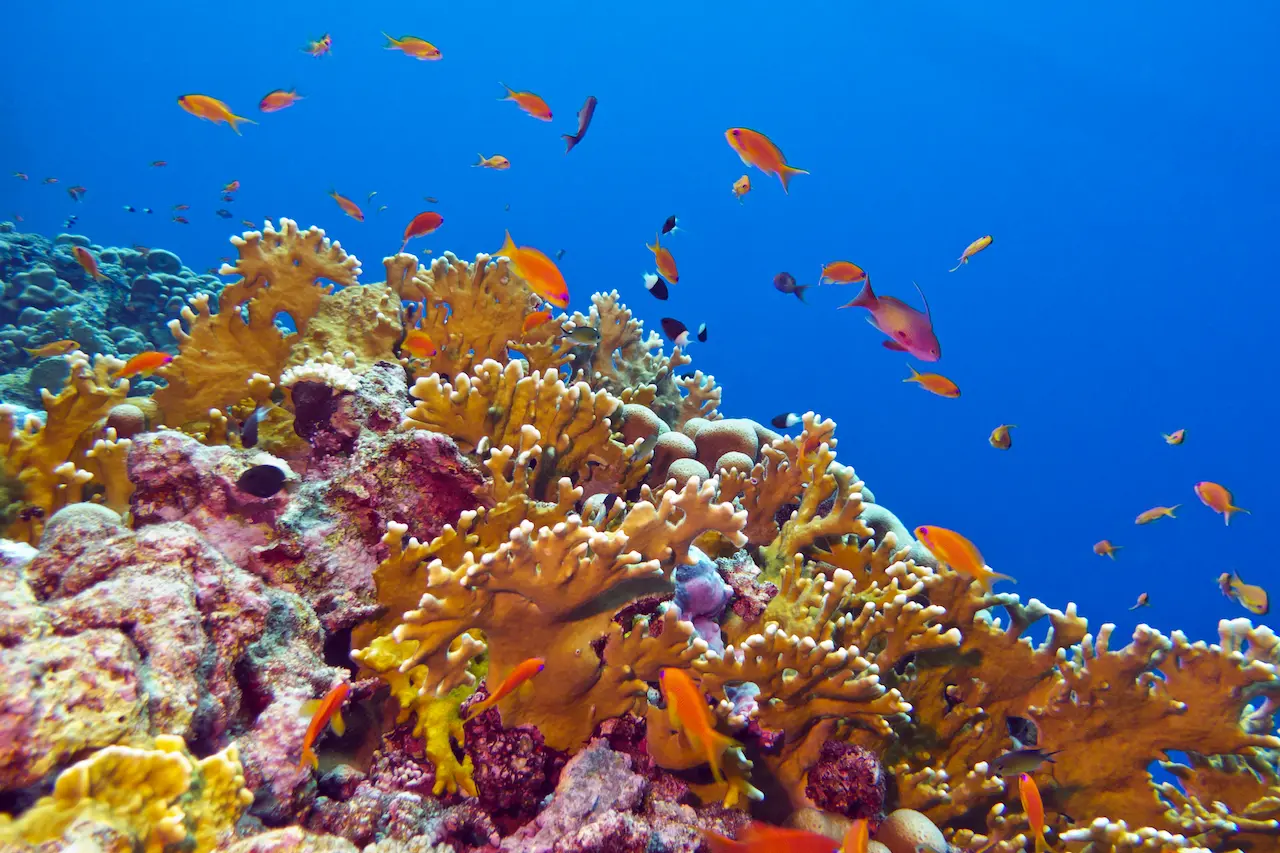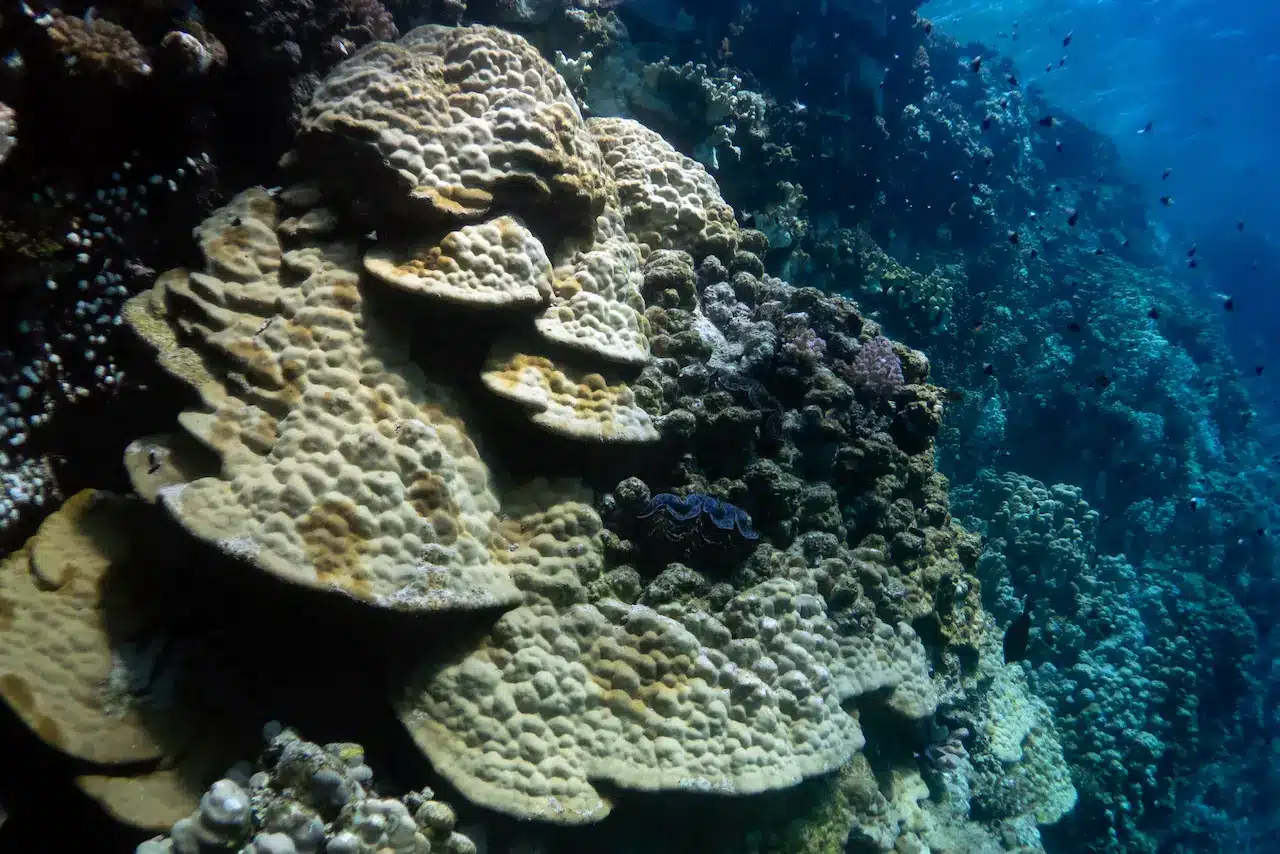How To Regrow A Coral Reef: A Step-by-Step Guide
Coral reefs are incredible underwater ecosystems that support immense biodiversity. However, due to human activities like pollution, climate change, and overfishing, many of the world’s reefs are now severely degraded.
All is not lost, however – with proper effort, we can help regrow and restore damaged coral reefs.
In this blog, we provide a step-by-step guide to the key actions you can take to revive a struggling reef ecosystem.
Table of Contents
ToggleStep 1: Remove Local Stresses on the Reef
The priority is alleviating immediate local stressors that hinder coral growth. These include:
- Overfishing: Unsustainable fishing depletes key species. Work with local communities to implement sustainable catch limits and quotas, gear restrictions, and Marine Protected Areas where fishing is limited. This allows fish populations to recover, restoring balance.
- Pollution: Nutrient runoff, chemicals, sediments, and plastic debris all impact water quality. Improve sewage treatment, implement fertiliser management plans, and reduce plastic usage to benefit reefs.
- Physical Damage: Boat anchors, destructive fishing practices, tourists, and severe storms directly harm fragile coral. Use public mooring buoys, ban damaging gear types, and teach reef etiquette.
- Invasive Species: Remove harmful invasive algae, predatory starfish, and other species through culling, biological control, or management programs. This gives the upper hand back to native corals trying to recover.
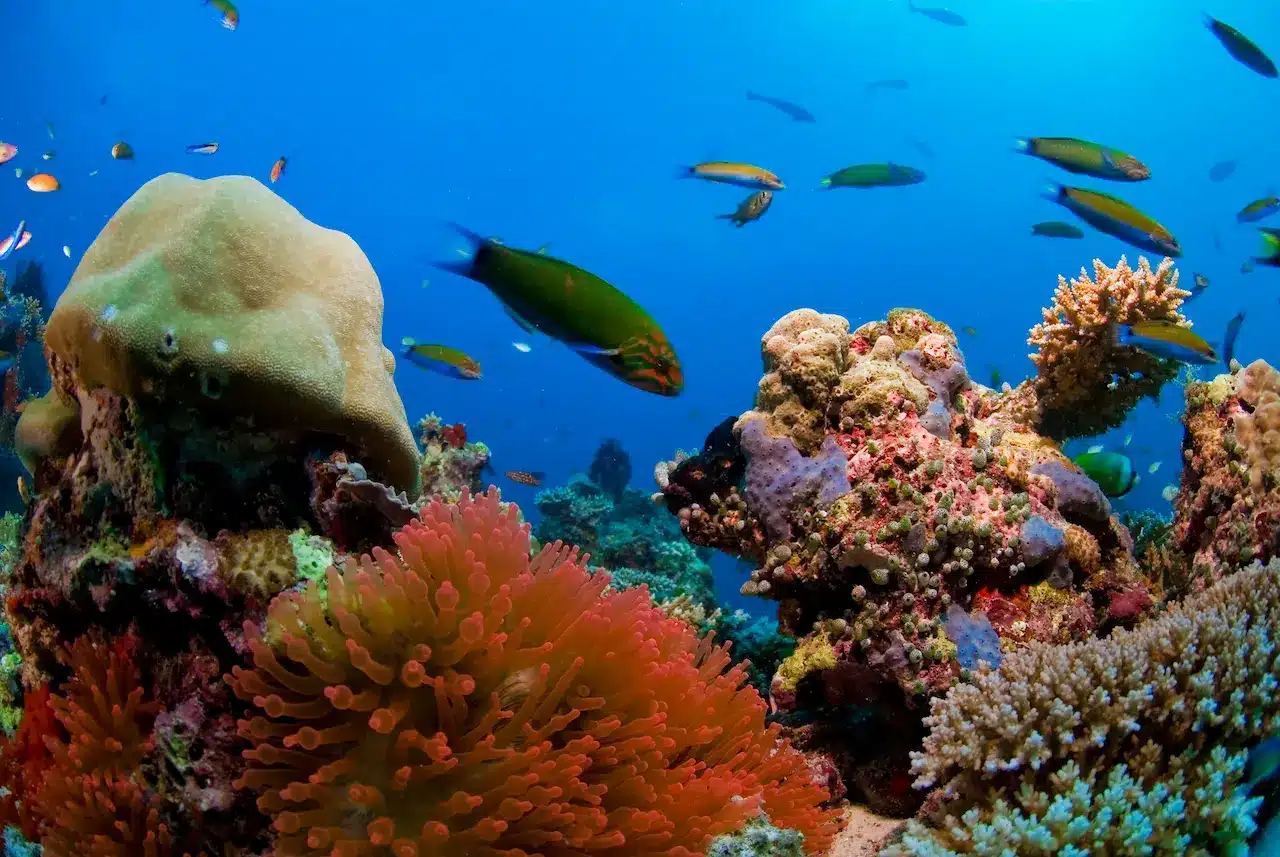
Step 2: Prepare the Reef Environment for Natural Recovery
Once local threats are reduced, optimise conditions for natural coral regrowth. Useful tactics include:
- Deploy substrate materials like reef balls, Biorock shapes, and lattices to provide hard surfaces for new corals to settle on.
- Install coral nursery structures stocked with healthy coral fragments. These will regrow before being transplanted back to the main reef.
- Propagate coral spawn by collecting eggs and sperm during spawning events and seeding them onto damaged areas to boost larval recruitment.
- Transplant coral fragments from nearby healthy reefs onto struggling areas. Gradually expand the coral cover outward through this regrowth.
Step 3: Actively Restore Coral Cover and Biodiversity
Natural recovery can be slow, so active restoration is key for measurable rehabilitation in a reasonable timeframe. Methods to promote rapid regrowth include:
- Coral Gardening: Grow coral fragments in offshore and land-based nurseries, transplanting them to restore dying reefs faster.
- Assisted Reproduction: Foster large-scale coral spawning and spread the larvae across denuded reefs to kickstart regrowth.
- Reef Stabilisation: Install artificial reef units, eco-concrete, and lattices to stabilise damaged structures and provide attachment points for new coral.
- 3d-Printed Reef Tiles: Immerse specialised 3d-printed tiles to attract coral larvae for enhanced natural recruitment.
Step 4: Support and Fund Restoration Efforts
Community engagement, research, monitoring, implementation, and enforcement are all needed for effective large-scale reef restoration:
- Volunteer with local organisations doing hands-on reef regeneration and get involved in citizen science projects.
- Donate to non-profits advocating and carrying out impactful restoration work in critical marine areas.
- Demand government support through environmental regulations, Marine Protected Area funding, and climate change mitigation policies.
- Raise public awareness by sharing the importance and fragility of coral reefs and progress in restoration methods.
By following these steps, we can restore vibrant coral reef ecosystems. It will take time, funding, and perseverance, but the effort is well worth it. Our actions can ensure the survival of these critical underwater jungles.
How can we help restore coral reefs?
Coral reefs around the world are under threat from climate change, pollution, overfishing, and other human activities. However, there are several ways we can help restore these vital underwater ecosystems:
- Reduce carbon emissions – The main threat to corals is warming oceans due to climate change. Reducing our carbon footprint by using renewable energy, driving less, and being energy efficient can help mitigate this.
- Improve water quality – Runoff full of nutrients, sediments, and toxins can smother and poison coral reefs. Using fewer fertilisers, reducing the use of plastics, and properly disposing of chemicals helps keep reefs healthy.
- Establish marine protected areas – Setting aside zones where fishing and human activities are restricted allows coral ecosystems to recover naturally. MPAS replenish the surrounding areas.
- Regulate sustainable fisheries – Overfishing upsets the natural balance of reefs. Setting catch limits, restrictions on methods, and quotas allow fish stocks to rebound.
- Combat invasive species – Invasive algae, predatory starfish, and other species can wreak havoc on corals. Removing these through targeted removal efforts helps native corals return.
- Support coral nurseries – Nurseries grow and re-plant coral fragments in the reef, providing a helping hand for ecosystem recovery. Volunteer opportunities are often available.
- Donate to organisations – Groups like the Coral Restoration Foundation, The Nature Conservancy, and Ocean Conservancy run reef restoration and advocacy programs. You can contribute funds to aid their efforts.
With a combination of policy changes, protection, habitat restoration, and community engagement, we can bring coral reefs back from the brink. Our actions do make a difference in regrowing these incredible underwater jungles.
Can coral be regenerated?
Coral has a remarkable ability to regenerate after damage. Given the right conditions, coral polyps can regrow damaged tissue and rebuild deteriorating reef structures through the following processes:
- Regrowth – If part of a coral colony dies, the living polyps adjacent to the affected area can stretch out and regrow over the bare skeleton. This helps reconstruct the physical reef structure.
- Fragmentation – Damaged coral branches or fragments that break off can reattach to the substrate and continue growing new polyps. Fragments are also used in coral nurseries.
- Recruitment – Coral larvae produced from nearby reefs can float into damaged areas and settle on hard surfaces, metamorphosing into new colonies and expanding the coral population.
- Partial mortality – If conditions allow, portions of damaged coral colonies with some living tissue left can recover health and continue growing.
- Algae symbiosis – Coral relies on symbiotic algae for nutrients. As long as this crucial relationship is intact after damage, recovery is possible.
However, corals require particular conditions for effective regeneration, including warm, clean, stable oceans. Severe damage or hostile environments slow the process. But in general, scientists find coral more resilient than previously thought.
With proper management and habitat protection, we can assist coral’s natural regeneration abilities.
Can dead coral reefs recover?
Dead coral reefs can recover under the right circumstances, though the process can be slow. Here are some key factors that allow reef recovery:
- Recruitment of new corals – Coral larvae from nearby reefs can float into damaged areas, settle on hard surfaces, and establish new coral colonies. This coral recruitment is crucial for recovery.
- Regrowth of remaining coral – If some coral colonies are left intact after a disturbance, they can regrow damaged tissue and spread. Partial mortality allows slow recovery.
- Favourable conditions – Coral needs warm, clear, and stable water to thrive. Good water quality and temperature allow recovery. Stable substrates help new corals attach.
- Alleviation of stressors – Reduce threats like pollution, sedimentation, overfishing, and destructive fishing. This supports natural recovery processes.
- Herbivory – Grazing fish and urchins help control algae growth, allowing young coral colonies to establish. Complex ecosystems are interlinked.
- Natural resilience – Given the chance, coral reefs can exhibit impressive natural resilience. However, assistance through restoration efforts accelerates recovery.
- Time – Reefs take many years or decades to fully recover. The Great Barrier Reef took 50 years after major damage. Patience is required.
While reefs seriously degraded by climate change face challenges, reducing local stressors and allowing natural regrowth gives coral its best shot. With perseverance and the right habitat, even dead reefs may bloom once again.
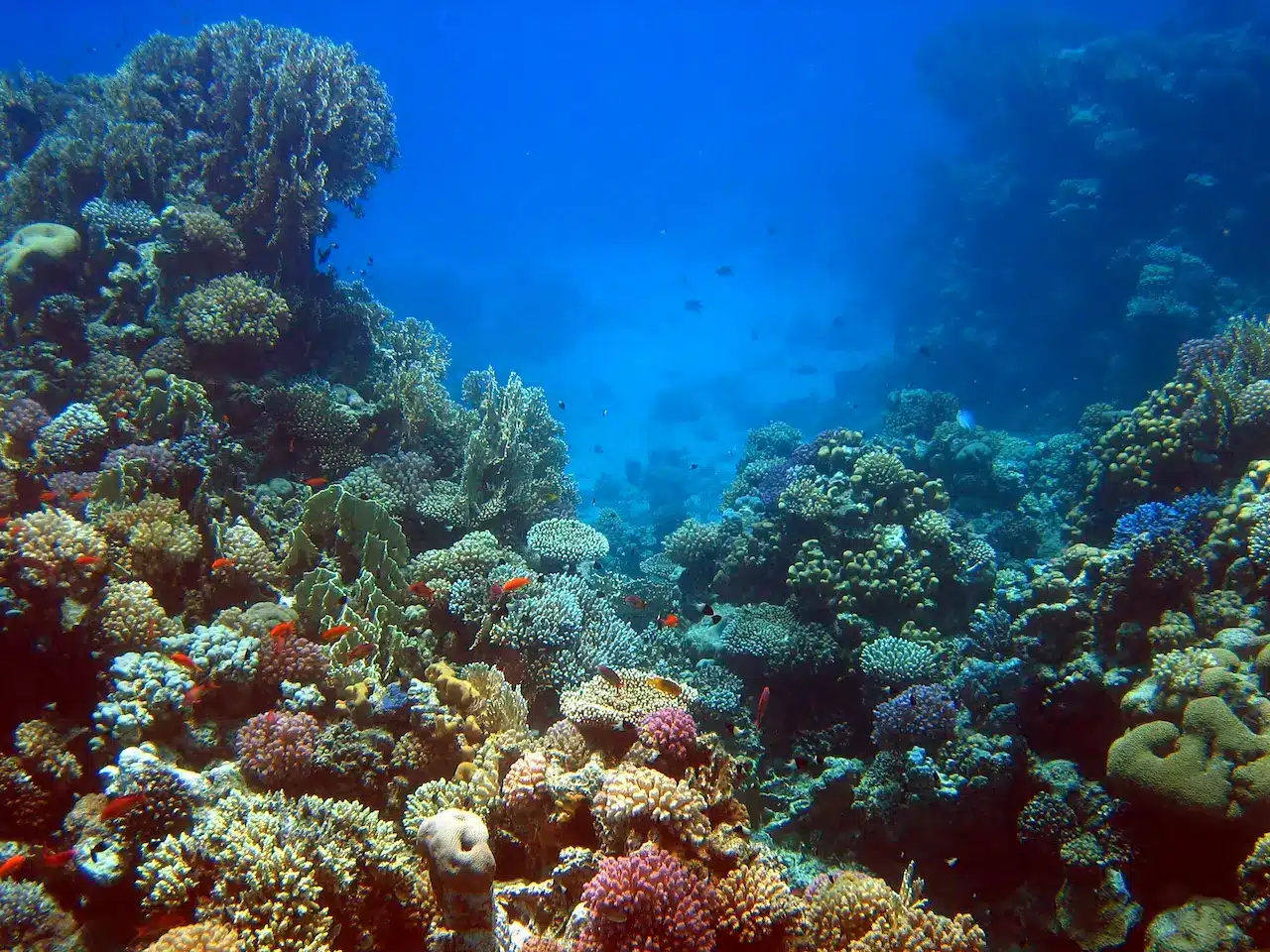
How long will it take to restore coral reefs?
The time it takes to restore a coral reef can vary greatly depending on the extent of damage, the type of reef, and the restoration methods used. Some estimates:
- For lightly damaged reefs that still retain most of their coral cover, recovery can occur in 5-10 years if conditions are stable. Regrowth from remaining corals accelerates the process.
- Moderately degraded reefs may take 10-30 years to return to their former coral coverage and ecosystem function. A healthy mix of regrowth and coral recruitment is needed.
- Severely damaged reefs where coral cover has been reduced to less than 10% could take 30 years or more to recover fully. They must rely on new coral settlements.
- Reefs experiencing substantial climate change impacts will take the longest to recover. Projections for the Great Barrier Reef are 50+ years under continued warming.
- Effective active restoration using coral gardening, substrate stabilisation, and herbivore management can accelerate recovery to 20 years or less.
- The fast-growing, branching Acropora species tend to recover more rapidly than slow-growing massive corals. Full ecosystem complexity takes the longest to restore.
- Deep-water reefs may take over 100 years to regain their three-dimensional structure due to slow coral growth rates in low sunlight conditions.
A healthy coral reef could fully recover in a decade with mild damage. But heavily degraded and climate-impacted reefs could take half a century or more to regain their former glory. Prompt active restoration and mitigation of threats are key.
What are the main threats to coral reefs?
Coral reefs face multiple human and environmental threats that damage their health and put their future at risk. Here are some of the key dangers:
- Climate change – Warming oceans, acidification, and extreme weather events like marine heat waves bleach and kill coral tissue. This is the overarching threat.
- Pollution – Runoff and coastal effluents carrying sediments, nutrients, chemicals, toxins, and plastic trash impair coral health and water quality for reefs.
- Overfishing – Excessive removal of key fish and invertebrates upsets the ecological balance of reef environments. Destructive practices also damage habitat.
- Invasive species – Non-native algae, predatory starfish, and other invasive flora and fauna proliferate and harm native corals. Often linked to pollution.
- Coastal development – Ports, residential construction, and resorts near shorelines can negatively impact adjacent reefs through dredging, debris, and intensive human use.
- Physical damage – Ship groundings, anchors, destructive fishing practices, tourists, and severe storms directly damage fragile corals. Slows regrowth.
- Disease outbreaks – Linked to higher seawater temperatures, bacteria, viruses, and fungi can cause coral diseases that rapidly kill colonies.
Tackling local stressors through good management gives corals their best shot against the global challenge of climate change. Protecting these fragile ecosystems requires reducing our environmental impacts at both local and global scales.
What can individuals do to help regrow coral reefs?
While large-scale solutions are needed to restore coral reefs globally, individuals can also make a meaningful difference through local action:
- Reduce your carbon footprint – Drive less, conserve energy, install solar panels, eat less meat, and fly less to lower emissions warming the oceans. This counters the biggest threat to coral reefs.
- Don’t buy coral souvenirs – Purchasing products made from coral or seashells encourages unsustainable harvesting from reefs. Choose eco-friendly alternatives.
- Use reef-safe sunscreen – Many sunscreens contain chemicals toxic to corals. Opt for mineral or eco-friendly brands. And don’t wear sunscreen when swimming on reefs.
- Reduce plastic waste – Properly disposing of plastics instead of letting them reach oceans can help prevent coral smothering and poisoning. Cut down on single-use plastics.
- Eat sustainable seafood – Support restaurants and retailers that use sustainable fishing practices without damaging reef habitats and fish stocks. Download seafood guide apps.
- Don’t touch coral – Avoid touching or standing on coral during reef visits. Oils and abrasion from contact with people damage fragile polyps. Practice responsible snorkeling and diving.
- Join a local reef conservation group – Get involved with organisations doing coral restoration, advocacy, and education in your community to contribute hands-on support.
Our individual choices and actions add up. By making more planet-friendly and reef-conscious decisions in our daily lives, we collectively empower large-scale coral recovery.
What new technologies are being used to regrow coral?
Scientists and conservationists are employing some innovative new approaches and technologies to accelerate coral reef regrowth:
- Coral gardening – Growing nursery-raised coral fragments in ocean beds or on structures before transplanting them to restore damaged reefs. Aims to boost coral growth rates.
- Micro-fragmentation – Using robotic tools to cut corals into tiny fragments for faster propagation. Each can grow into a colony. Useful for branching corals.
- 3d-printed coral larvae traps – Submerging specialised 3d-printed shapes designed to attract and catch coral larvae helps seed new colonies in struggling reefs.
- Larval propagation – Captive breeding of corals to produce huge amounts of coral larvae for seeding nurseries and restoration sites rapidly. Still experimental.
- Genetic manipulation – Selective breeding and gene editing techniques like CRISPR to develop more heat-tolerant corals that withstand warming oceans and aid restoration. Controversial.
- Robot reef farmers – Submersible drones that monitor coral nurseries, track growth, deliver food to supplement photosynthesis, transplant corals, and control predators and weeds.
- Enhanced reef substrates – Creating optimal surfaces for coral larval settlement using materials like charged porcelain, conductive figures, and 3d-printed terrain.
- Probiotic applications – Using beneficial bacteria or compounds that promote faster coral growth and boost heat resistance to accelerate regrowth on restored reefs.
Cutting-edge science like these approaches could one day grow reefs as fast as forests. However, care must be taken to avoid risks and maintain natural ecosystem balance.
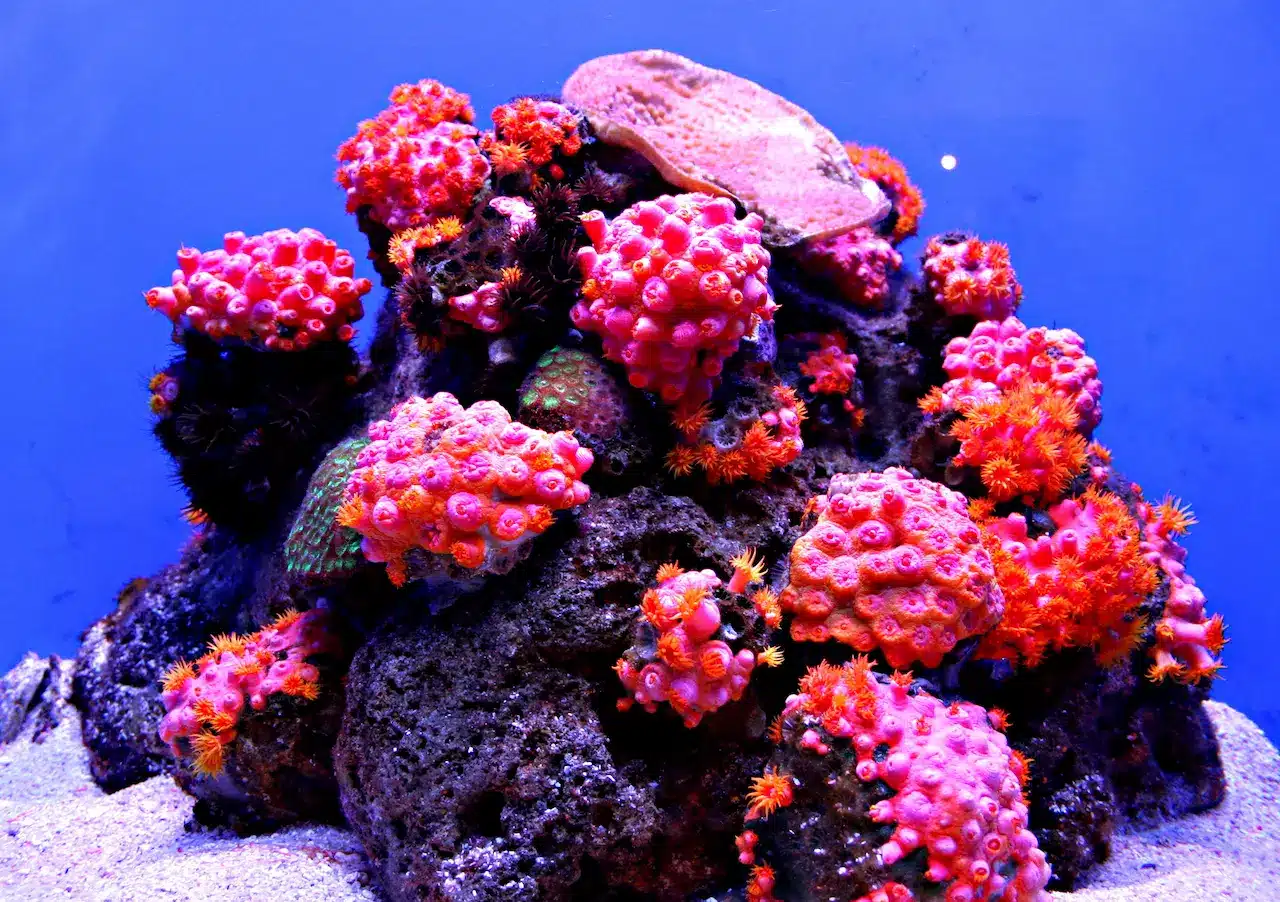
How does coral reef regrowth work naturally?
Coral reefs have some amazing natural regeneration abilities. Here are the key biological processes that enable coral regrowth after disturbances:
- Coral recruitment – Larvae released by nearby coral float into damaged areas, settle on hard surfaces, and grow into new colonies. Vital for expanding coral populations.
- Fragmentation – Broken coral fragments that get lodged on the substrate can continue growing if part of the colony remains alive. Fragments are also used in restoration.
- Partial mortality – Some coral species can survive partial death from disturbances, with remaining healthy polyps regrowing over damaged areas.
- Algal symbiosis – The symbiotic algae zooxanthellae that live within coral tissue and provide nutrients remain intact after damage, enabling recovery.
- Growth from undamaged colonies – Surviving coral colonies adjacent to affected areas expand through the budding of new polyps outward from parent colonies.
- Gradual tissue regeneration – Damaged coral gradually regrows living tissue over the bare skeleton, recovering colony structure. Speed depends on species.
- Sexual reproduction – The creation of new genetically diverse coral colonies through broadcast spawning allows repopulation after major die-offs.
- Competitive ability – Fast-growing branching and plating species like Acropora can outcompete algae and reclaim space quickly after disturbances.
Under the right conditions, coral demonstrates remarkable resilience through these regenerative abilities. However, recovery may take years to decades, depending on damage severity.
What organisations are working on coral reef restoration?
There are several great non-profit groups and other organisations working worldwide to restore and recover damaged coral reefs through innovative programs:
- Coral Restoration Foundation – Trains divers to grow and outplant corals in offshore nurseries in Florida, the Caribbean, and beyond using coral gardening.
- SECORE International – Non-profit utilising sexual coral reproduction, micro-fragmentation, cryopreservation, and larvae restoration methods to regrow reefs globally.
- Reef Renewal – Using Biorock electrochemical techniques to grow resilient coral frameworks, restoring reefs in Hawaii, the Caribbean, Maldives, and more.
These groups demonstrate that with determination, innovation, and proper resources, we can restore coral reefs and create positive change, one coral fragment at a time.
Conclusion
Regrowing damaged coral reefs is an urgent priority globally, but there is well-founded hope. Coral exhibits impressive natural regeneration abilities given the chance, and emerging science is accelerating human assistance.
While restoring large reef systems will require massive effort and funding over decades, individuals, too, can make a tangible difference through local conservation action.
With expanded marine protection, global carbon emission reductions, responsible fisheries, improved water quality, and active restoration programs, the prospect of vibrant reefs for future generations remains brightly visible through the turquoise waters.

